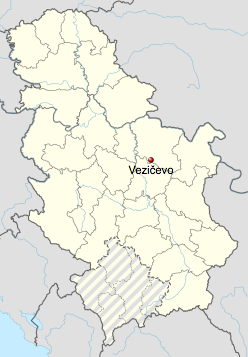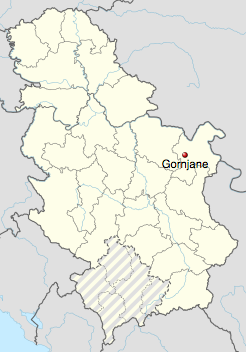*A Living dance is a 1st Generation dance that is still performed in the country of origin (or immigrant communities) as part of a social event like a wedding where others can participate (not for an audience) by people who learned the dance informally (from friends and relatives by observation and imitation, not in a classroom situation). For more information, click here and here.
Vlaško kolo (vlahsh-koh koh-loh) is a Serbian dance (not to be confused with many Bulgarian dances containing the word Vlaško). The name means “kolo of the Vlachs”. That’s simple enough, but who or what are the Vlachs? Accordong to Ron Houston, the word ‘vlach’ applies to “an ethnic minority in the Balkans, etymologically and linguistically related to the historical Romanian province of Wallachia.” The word is thrown about rather loosely, and can mean anything from ‘foreigner’ to ‘shepherd’. To most Serbians the word means ‘people who speak Romanian’, and there are quite a few of those living in Serbia. (about 43,000 self-declared, acccording to the 2011 census, though the actual number is thought to be higher). Another Serbian word referring to Vlachs is Vlainja – a female Vlach. There’s a well-known dance in recreational folk dance circles called Stara Vlainja – ‘old Vlach’.

The version I learned was slightly different, though the basic pattern was the same. Introduced in 1973, the Dubrivoje Putnik version incorporated musical interludes, started slow, and accelerated.

I googled Stara Vlajna looking for Serbian non-performance examples and found these two – the first rather staid, the second with more energy and variety of steps.
After posting my article on Hora de pomană [Dancing for the Dead, click https://folkdancefootnotes.org/culture/special-occasions/dancing-for-the-dead-joc-hora-de-pomana-banat-oltenia-romania-serbia-bulgaria/ ], I received the following comment from John Uhlemann: “All the Vlach Serb dances were Vlainja, by structure. They either did the Vlainja that used to be done faster (7 steps to R, 2 in place, 3 steps to the left), or they did the same foot pattern , but with all the steps to the right, and slow/moderate. One folklorist told me that this was because women like to wear high heels and that led to slower tempos and a dance that almost “meanders to the right. It is, though, still R,L,R,L,R,L, R, touch,L, touch, R, touch, L, R, L, touch.“
What John called Vlainja I had found labeled Vlaško Kolo in the Serbian ora de pomană YouTubes, so I googled Vlaško Kolo et voila! I stopped looking after I found over 30 examples. Notice the variety of ways to move 7 steps to the right, including grapevines. I like the girl in the pink dress at 2:15.
John Uhlemann’s comment: “as your woman in the pink dress showed, ethnic social dance is often more a structure into which you pour your dance, not a single step. You can tell choreographed dances designed for Americans that way – if you can do all the variations at the same time within the line without bothering your neighbors, it may be “real”, but if doing the variation stops the rest of the line, then it is suspect. Again, look at the woman in the pink dress.”

The only Serbian town is Loznica. Which is this?

There are so many YouTubes that I wonder if Vlaško kolo is a general Serbian dance, not just done by the vlachs. Below are two YouTubes labeled Vlaško gadje kolo – gadje being the Romani term for non-Roma. Vlach is sometimes used as a synonym for Roma by gadje. Does this mean that most Vlaško kolo‘s are performed by Roma, or that Romani Serbians think gadje dance it differently? John Uhlemann has helped clarify with this comment:
“The Vlach Serbs themselves would not call this Vlaško, preferring Vlainja or just Dancu. I suppose if non/Vlach Serbs were to do the dance at all they might call it Vlaško, and the Vlachs may use the term to outsiders. It is not really a Roma dance, although the Roma can do what they want.“
